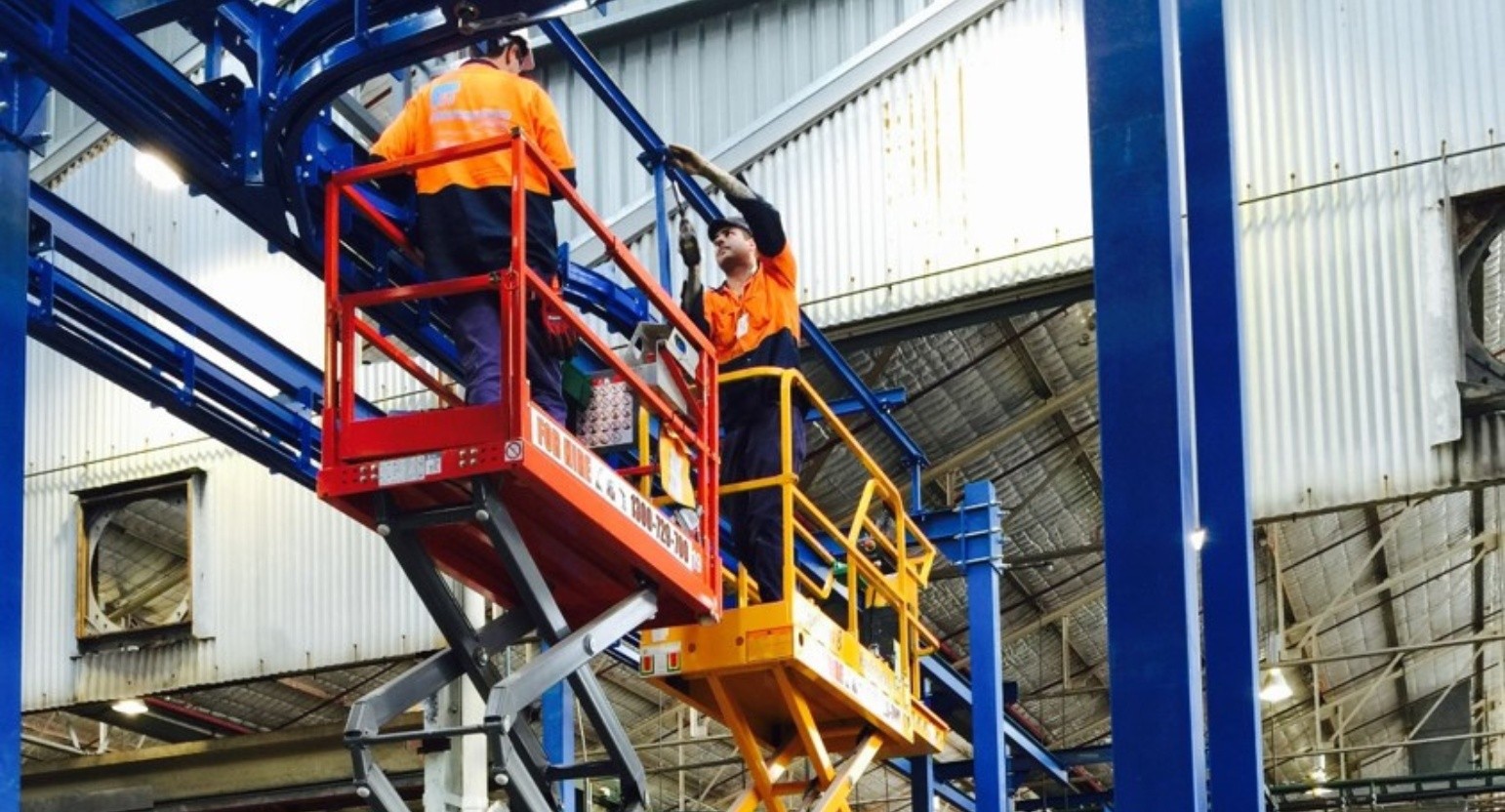What can go wrong with a scissor lift (and how to stay safe)
When we talk about machines, the first things that come to mind are how great and efficient they are for worksites, because that’s the beauty of them. However, they do need to be treated with respect. They are, after all, very heavy and substantially built! So, to be a responsible owner or hirer (and, indeed, sellers like All Lift) it’s important to also understand the potential risks of these machines in order to do everything required (plus some) to avoid them happening on your site.
So, what can go wrong with a scissor lift if legal and general procedures aren’t followed?
Tipping
While scissor lifts are specifically designed to enable height reach, safely, to avoid other more dangerous methods of completing those tasks, they aren’t impervious if not treated correctly. Tipping can be a real risk if the scissor lift has not been properly set up, operated and the terrain and load has not been adequately considered. While not an exhaustive list, the main behaviours that can cause an accident are:
- An off-centre load, particularly one that is heavy or too heavy for the scissor lift’s capacity, disrupting the centre of gravity.
- Poor weather conditions for outside use (heavy winds etc.)
- Unsafe or unconsidered terrain. There are more obvious hazards like potholes or sharp inclines, but even an uneven surface with the wrong scissor lift can be equally risky.
How to avoid tipping
Talk in detail to your scissor lift supplier about the exact terrain and use you intend for the scissor lift (with images if possible) to get the right advice on the type of scissor lift you should use, and how to use it. You may need operator hire, for example, or adjust what you expected to be the right machine to one that’s more suitable. You should also have a firm and clear understanding of the directions of use of the scissor lift, and for every person operating the machine, at all times.
Incorrect use causing accidents
By their very design, scissor lifts should be giving you the ability to reach where you need to reach. If it doesn’t, you just need a higher scissor lift, or another machine (such as a cherry picker). So, this means that under no circumstances should additional equipment (that is not a purposefully designed attachment) on the scissor lift. Using chairs, ladders, ropes or any other non-certified item to use the scissor lift in unregulated ways is a BIG no no. At the very least, it can break the scissor lift, but at the worst it could cause fatal accidents.
How to avoid accidents
Simply use your scissor lift as it is intended: on its own. Getting creative with it is only going to put yourself and others in harm’s way.
Untrained or inexperienced operator errors
Unlike a lot of other machines, not all scissor lifts require a licenced operator (typically, under 11m does not need a licence for use). However, this does not mean that just anyone can operate your bought or hired scissor lift. Anyone using the machine should have a sound understanding of the scissor lift being used, the safety process required and a good amount of experience. The first two are non-negotiable, but if the latter cannot be met then the operator needs a trained and experienced supervisor at all times.
How to avoid operator errors
Be extremely diligent about who is operating your scissor lift at all times. All Lift have Telematic technology to ensure that scissor lift operations are strictly monitored for use, and we also offer hire of our operators who are skilled, experienced and qualified for the job.





